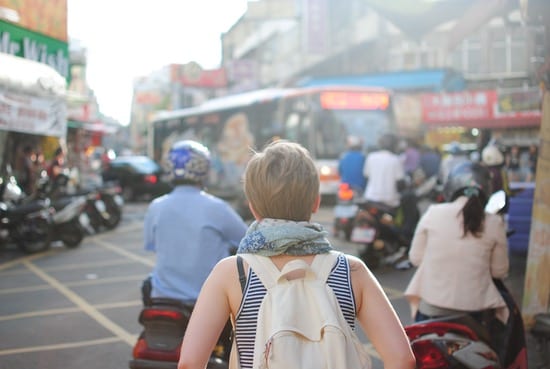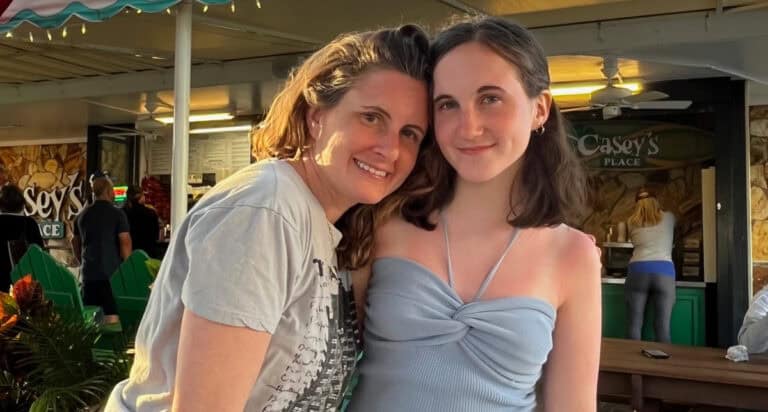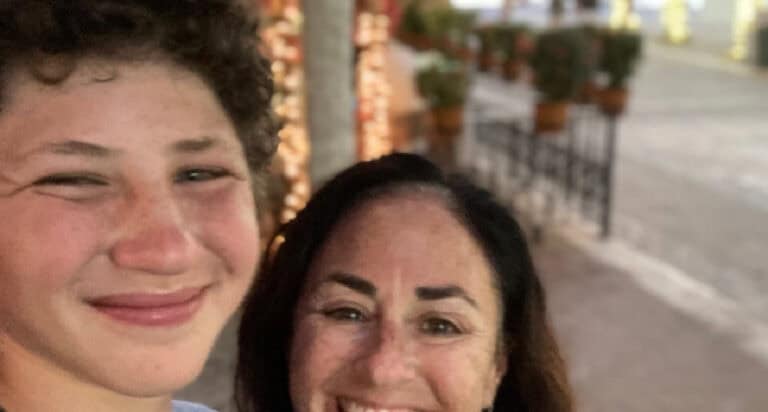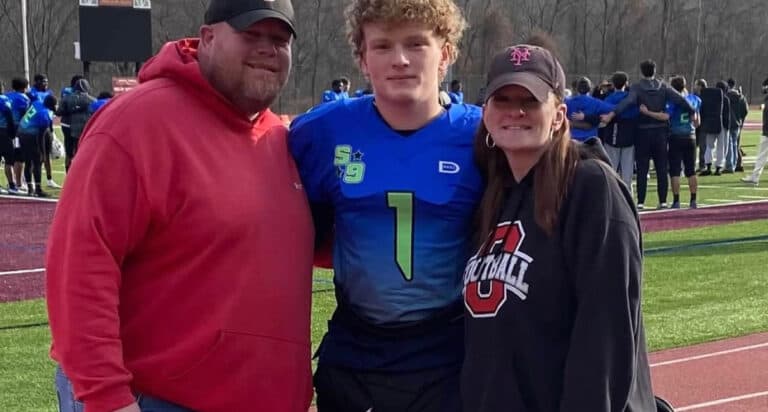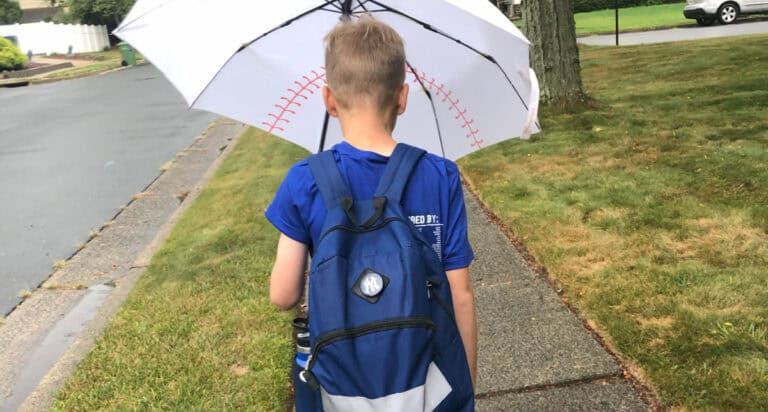In first grade, I took the public bus to school.
You would have to know what our old neighborhood was like, and how protective and careful my mother was, to fully understand how unbelievable this is, but you will just have to trust me on this. The hometown of my youth, today a tony suburb of Baltimore and D.C., was just a piece of Americana then, a small boating town where everyone knew everyone.
Like most of the moms in the neighborhood in those days, my mom had the car only one day a week, during which she would get most of her shopping done. It was also the only day during which she, or or any of the other moms, could have driven their children anywhere beyond the confines of the neighborhood, where we kids played in the street while our moms talked and smoked cigarettes.
The rest of the week, the dads drove the family car to work, where it remained parked in the parking lot while the moms at home “made do.” “Making do,” and public transportation were both second nature to my New York-born-and-raised mother, so when she and my dad decided to send me to a Catholic school which did not provide a regular yellow school bus, the city bus seemed the obvious choice.
But I was not only a small town girl, I was a really, really small girl. Even the smallest-available samples of the gray wool uniform jumper I needed to wear hung on me. On Uniform Order Day, the ladies in charge whispered in Irish about how “tiny” I was, and wondered how long it would take for a specially-made versions of the jumper to be ready.
The school kids of 1971 were still carrying their books in long-strapped satchels in colorful plaids with flaps that closed with a push button clasp, hanging off one shoulder. We call these messenger bags now, but in those days, we just called them book bags. No one had yet thought of backpacks as a hands-free choice for unusually short school children who might topple over under such a one-sided weight while they caught the public bus. Until my mother.
She headed first to the fabric store for a bag pattern she could modify into a knapsack. She then attached two straps of marine webbing, which was plentiful in town, adding D-rings to make the straps adjustable. I had only seen such a thing carried by hitchhikers and boy scouts. Mom assured me that carrying my books in this knapsack would allow me to keep both hands free to reach up and grab the handrails as my little legs climbed and descended the big steps at the front of the bus.
The necessary bus pass was a problem, too. Then, not unlike now, I had a tendency to lose things, and I think my mother worried about that, and about how I would get the pass in and out of the nifty knapsack on my back without delaying everyone. Undaunted, she punched a round hole in the pink card, reinforced it with a grommet, and put it on a chain I could wear around my neck all day.
For the first couple of weeks, my mother rode with me on the bus, my little brother in tow. She explained the procedure completely on the first few rides, pointing out instructions, landmarks and potential pitfalls, instructing me continuously at first, then less and less as the days went on until I learned the way.
There were a lot of rules. I was to walk directly down Tyler Avenue to the bus stop. I was never to approach a stopped car. Once on the bus, I was to have my pass out and ready, leaning my head and body forward with the pass in hand, Norman Rockwell-style, so that the bus driver’s quick hole punch could reach the pass and mark another day I’d made the journey. If anything went wrong, I was to ask the bus driver what to do.
Mom had, of course, conspired with the driver ahead of time to, “keep an eye on me” and once on the bus, I was to sit as close to him as possible. When I had scooted into the big leather bench seat, my knee socks and school shoes dangling off the edge, I could tuck the chain and card back into my uniform,right between the starched white blouse and the wool herringbone jumper, where it became both a source of pride in my independence and of hot shame when my classmates asked teasingly about the “flat thing” under my uniform. Still, I knew better than to take it off; it was my ticket home.
I realize now that my mom must have done the dead-end trips too, riding home after delivering me at school, and planning her afternoon carefully ahead so that she would arrive on the bus in time to meet me at the end of the day.
Today, a couple of my grown up kids ride city buses, and I know nothing of the routes and schedules that they know by heart. I have no idea how safe or dangerous it is, the mistakes they could make and perhaps sometimes do, where they go, where they get off, or how they pay their fare. But this year, a couple of them have been riding another bus – one the kids these days jokingly call the “Struggle Bus.” And when they ride this bus (which they do a lot), I ride with them, just like my mom did.
I am often anxious when we are on the bus together, but I do not want them to ride alone. I know they need to ride it to get where they are going, but I wish I could just drive them there and save us all the trouble. I wish there was another way. But I know about the Struggle Bus just as my mom knew about the city bus to first grade: it’s the only way to get to and from the places where they’ll learn the most.
I, too, have planned ahead spending years thinking of everything they’ll need to safely ride the Struggle Bus alone. I look out the windows at the route as we ride together, giving directions, pointing out landmarks and potential pitfalls along the way, until I remember that if I don’t stop doing this, they won’t learn to recognize when to pull the cord, to find their stop or how to get off the Struggle Bus when it is time.
I take the dead-end trips too, after I’ve dropped them off and before I pick them up again, and that’s when the Struggle Bus becomes my own. Like me, they probably don’t think about that part, about the misty-eyed mom riding all the way back just to get where she started out. They don’t consider that she just wanted to be there with them for the ride, and that she paid a double fare to do it.
Since they don’t love it when I talk to them about God, I remind them to always sit close to the driver of the Struggle Bus, because He will keep an eye out for them, I tell them that if anything goes wrong, they should ask the driver what to do. I don’t know if they follow these directions, but I, too, have conspired with the driver, and know that He is keeping an eye out for them. I know that they have reached a point where they must ride the Struggle Bus alone, and I think they know that too. They also know that their punched pass on the Struggle Bus is a source of both pride and shame, but either way, it is the way home.
As I near home, I pull the cord on the Struggle Bus secure in the knowledge that they are okay riding alone. I descend the huge steps, grabbing the rails with both hands to steady myself.
They know I’ll be waiting for them at home.
Related:
How to Keep Your Family Knitted Together Once Kids are Grown
